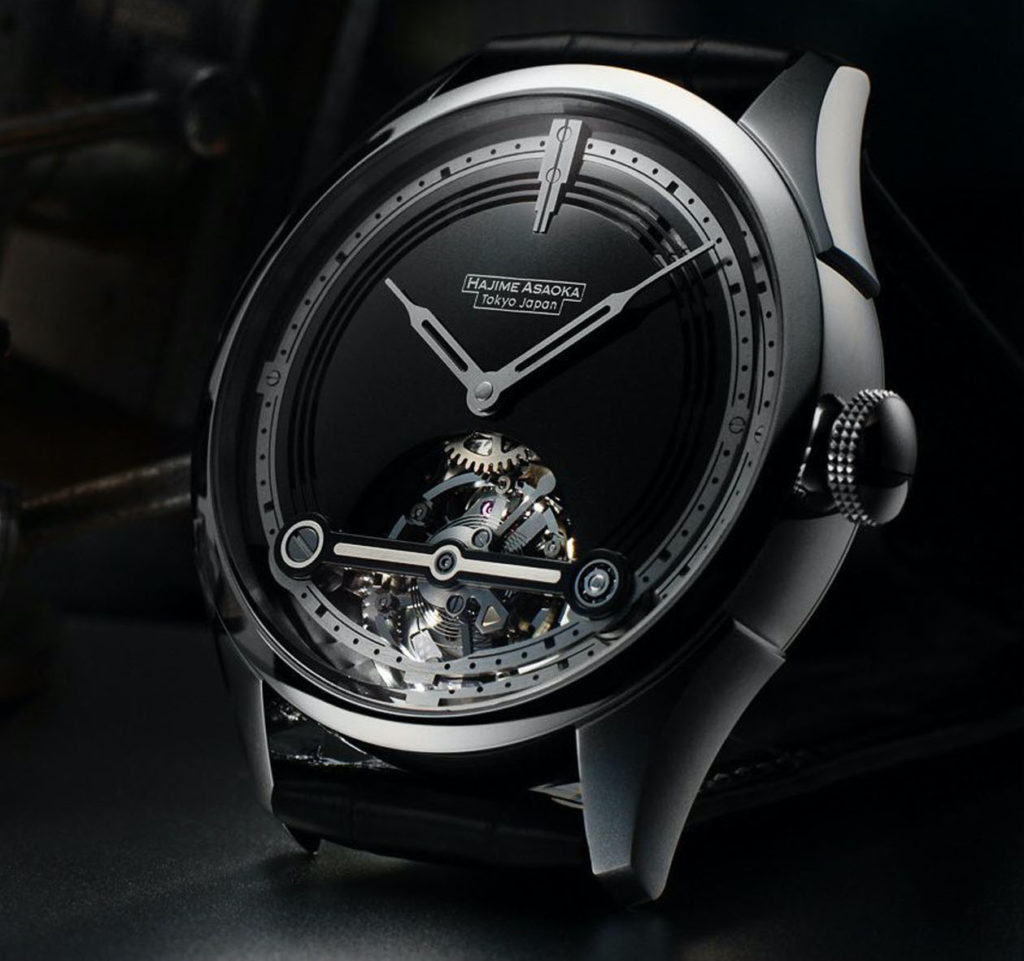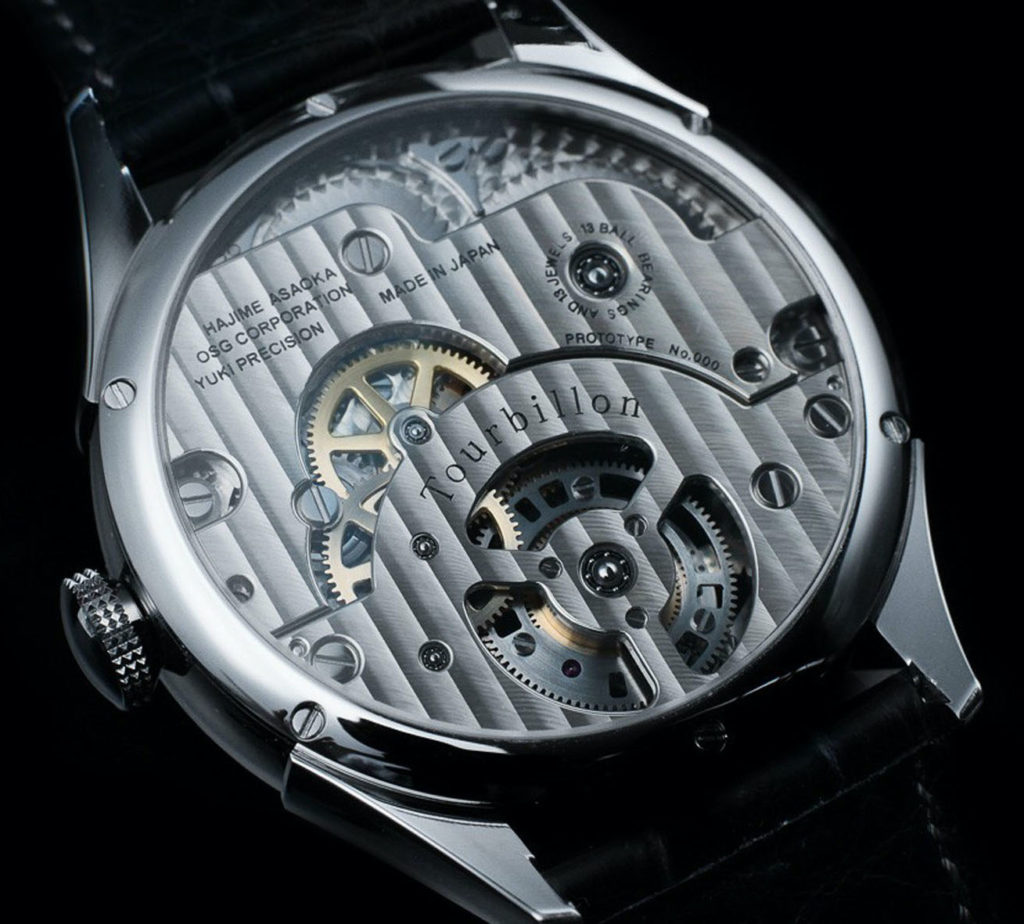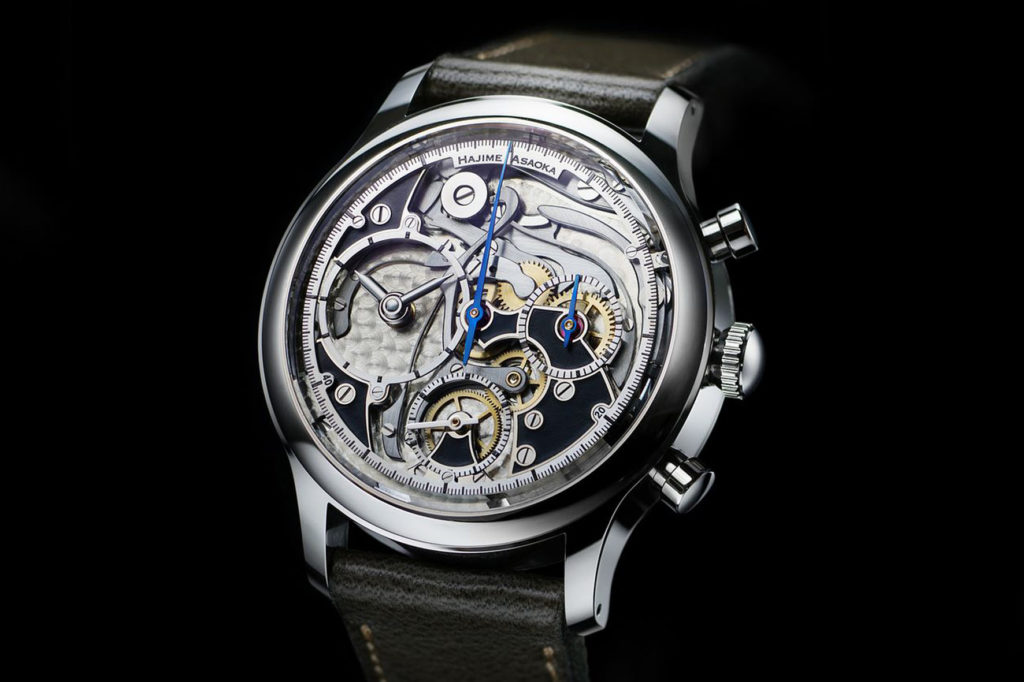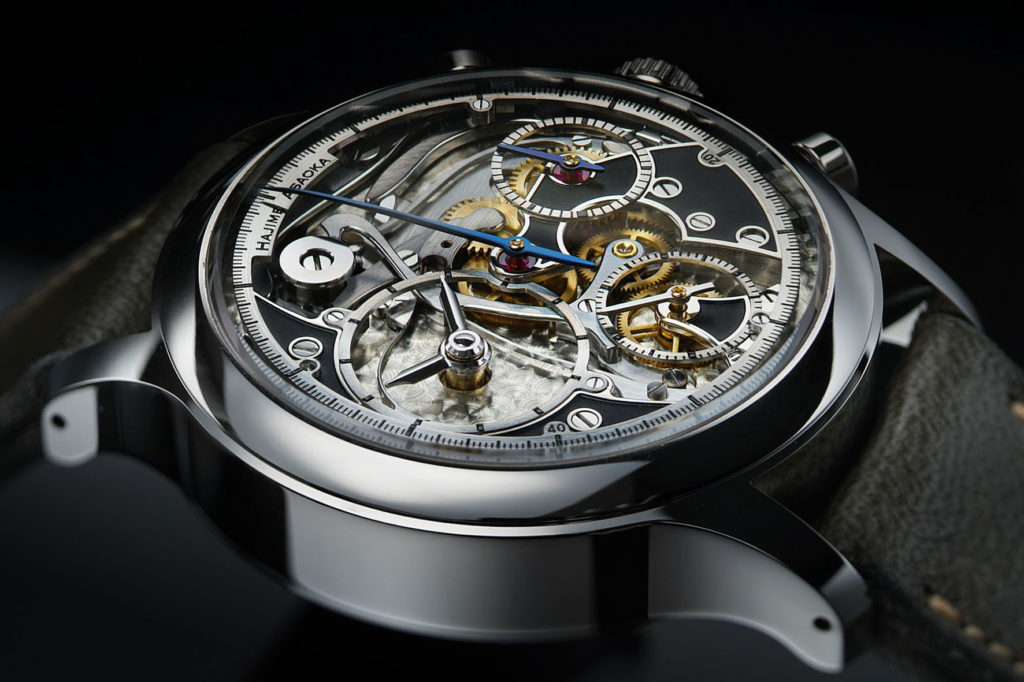The Watchmaking Art of Hajime Asaoka
11 November 2020When we think of Japanese watchmaking it comes naturally to associate it with brands such as Seiko, Grand Seiko, Citizen and even Casio. We hardly think of artisans, comparable to small Swiss manufacturers. It’s a pity, because ateliers like Hajime Asaoka‘s are rare (and precious…) pearls in the world of watchmaking.
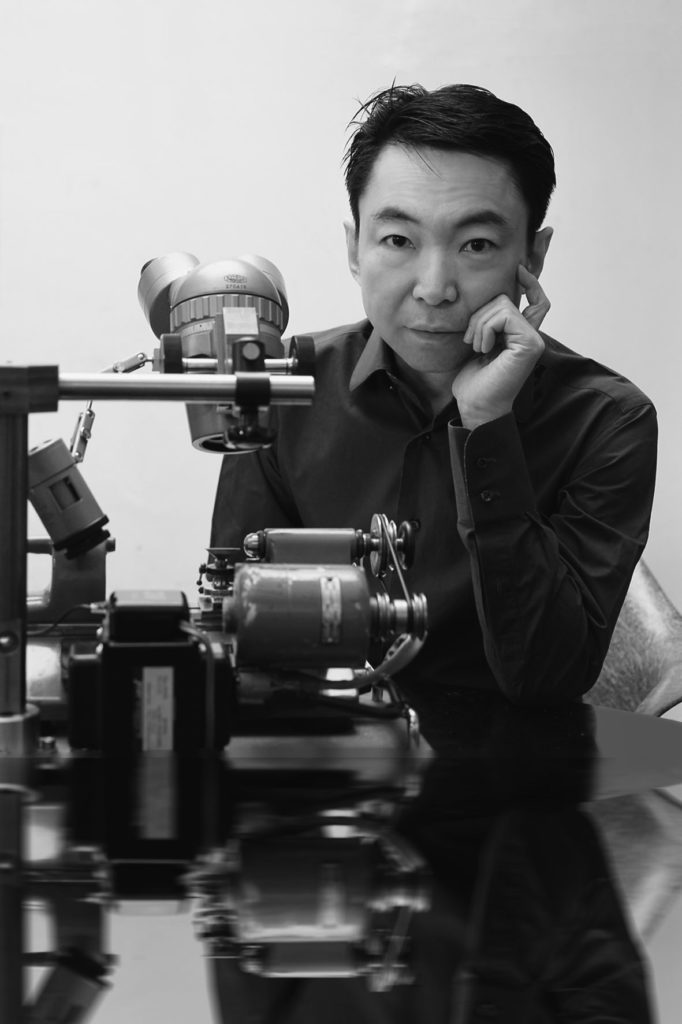
But who is Hajime Asaoka? And how does he fit into the Japanese watchmaking tradition? Let’s start by saying that his approach to Haute Horlogerie came in a singular way: through fashion magazines. But let’s take one step at a time.
THE BEGINNINGS OF HAJIME ASAOKA
After graduating in product design at the Tokyo University of the Arts in 1990, a couple of years later he founded the Hajime Asaoka Design Office, with which he mainly designed electronic products and furniture. In addition to this, the graphics department worked as a service, designing fashion magazines which, as we all know, often host watchmaking content.
Hajime was too fond of beautiful things and beautiful shapes not to be attracted by that world, which had already begun to intrigue him as a boy when, at the beginning of middle school, his father gave him a Citizen Bullhead chronograph: «It was the quartz era, he recalled in a recent interview, but I was much more interested in mechanical watches.»
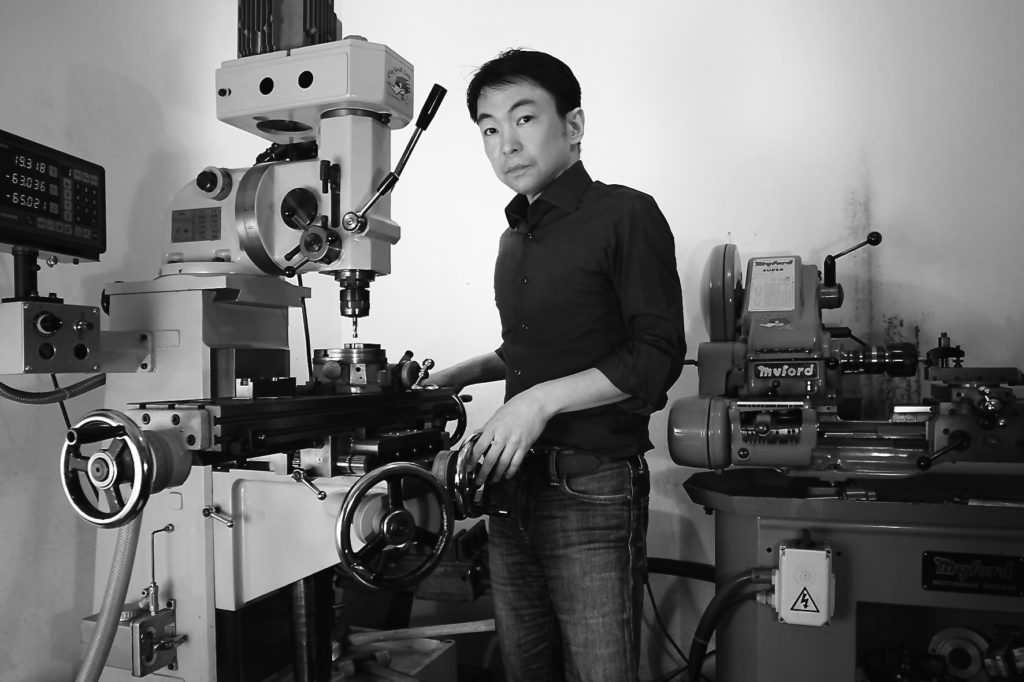
Thanks to fashion, he began to follow watchmaking with diligence and curiosity, thinking about creating something of his own but clashing with a stumbling block: being an outsider, his passion and his talent were not enough, he needed someone who could concretely pass on the knowledge, the techniques and the secrets of watchmaking to him. And, to Japanese watchmakers, he was a perfect stranger.
LOOKING OUTSIDE JAPAN
So that is what Hajime Asaoka decided to do by himself, starting from the best: reading the book of a great Watchmaker, George Daniels’ “Watchmaking”. A decisive push towards what would have been his career as an independent master watchmaker, which began in 2005 by inserting a Citizen movement inside a case made by him. Design first, of course…
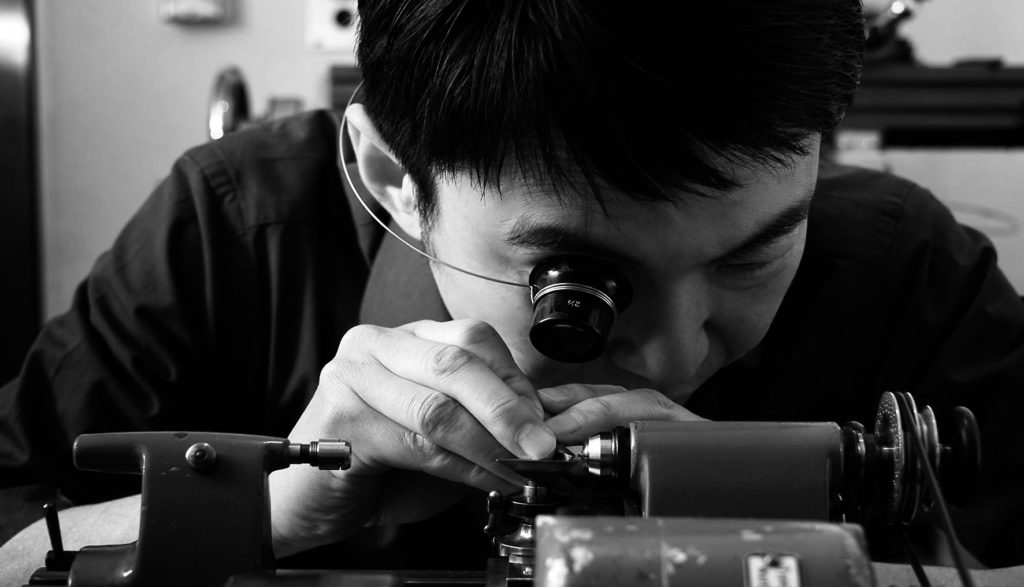
“According to my education, I have always been attracted by craftsmanship and creating something with my hands was natural for me, he declared. I actually designed my first watch in 1995, but at that time I was still just a designer, so the design was the only moment I was involved in. The relationship with watchmaking had not yet taken the turn I imagined. I started learning about watches in 2005 and launched my first timepiece on the market in 2011, my debut as an independent watchmaker.” It was Tourbillon 1, and everything changed from there.
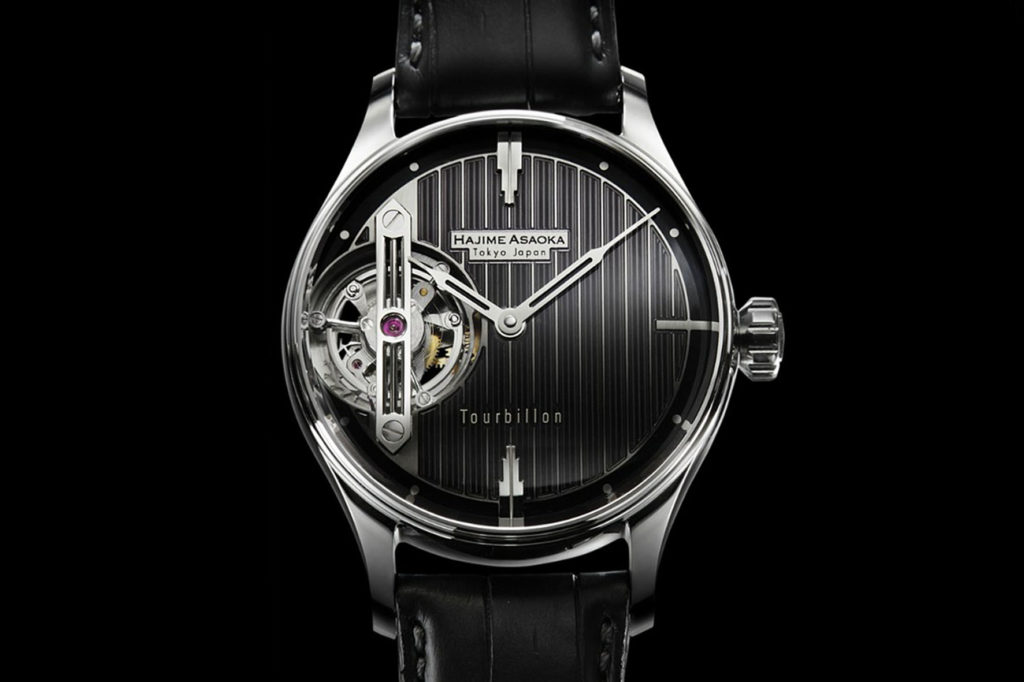
Being a handcrafted brand, Hajime Asaoka cannot count on numerous collections or on mass production. In fact, there are four watch collections created by the Japanese master: Tourbillon Pura, Chronograph, Tsunami and Project T Tourbillon.
“I produce about 5 watches a year; even if I increased the production, I would not be able to satisfy the requests, I would have to double or triple it and I would need tools and people to do it. Even with this limited production, it is still difficult to keep a high-level of my work,” he says.
TOURBILLON PURA
Coming to the single watches, the Tourbillon Pura has a declaration of intent in the name itself. The purity is in the lines of the 40mm case and in the dial, where at 6 o’clock the tourbillon window clearly opens, whose cage is made of duralumin A7075, a light but resistant alloy also used in the aerospace industry. The solution of the base plate is interesting: keeping each component in its place, it guarantees the watch greater precision.
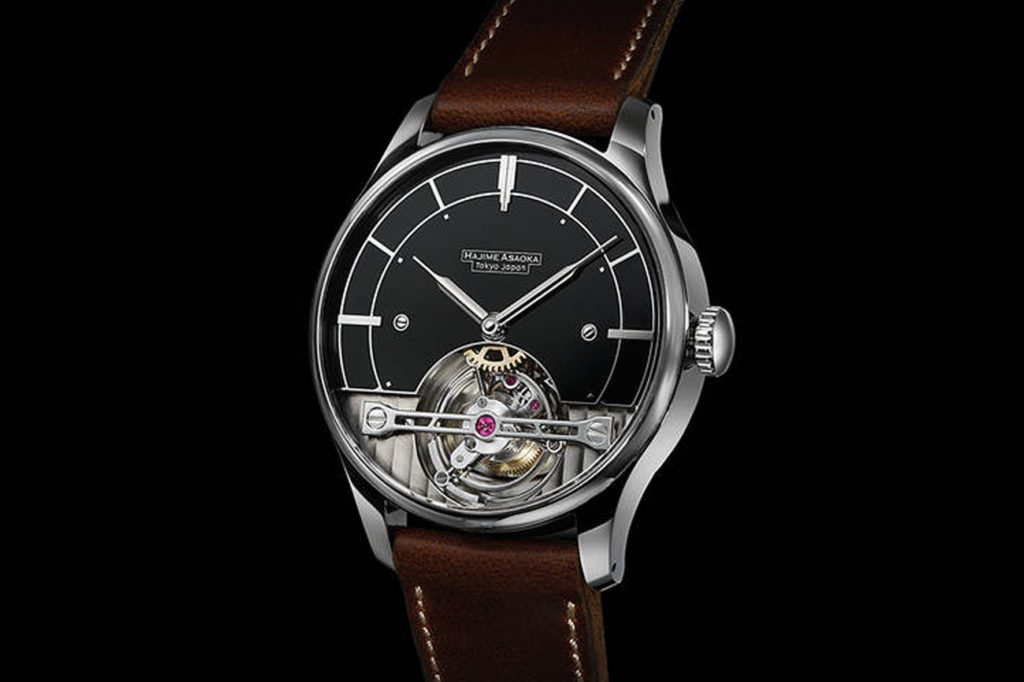
This mix of craftsmanship and advanced technologies is achieved thanks to the collaboration of Hajime Asaoka with Yuki Precision, a company specialized in micro components: “They produce precision components, says Hajime, they are not focused on creating parts for a watch. As I was very interested in their ability to create detailed components, I was sure they could also create them for timepieces, so I wondered if I could collaborate with them on my tourbillon watch project. Moreover, as a student, I lived in the same city, which is very familiar to me. Their craftsmanship is genuine, so the collaboration was born and the tourbillon they work on is exclusive to my watch.“
TSUNAMI
Tsunami‘s design, on the other hand, is very much inspired by vintage canons. The 37mm steel case finishing alternates polished and satin surfaces. The dial comes from Asaoka’s experience in pad printing and is made entirely by hand. The numbers and the finish have a three-dimensional effect and the dial has a gray scale with radially alternating indexes.
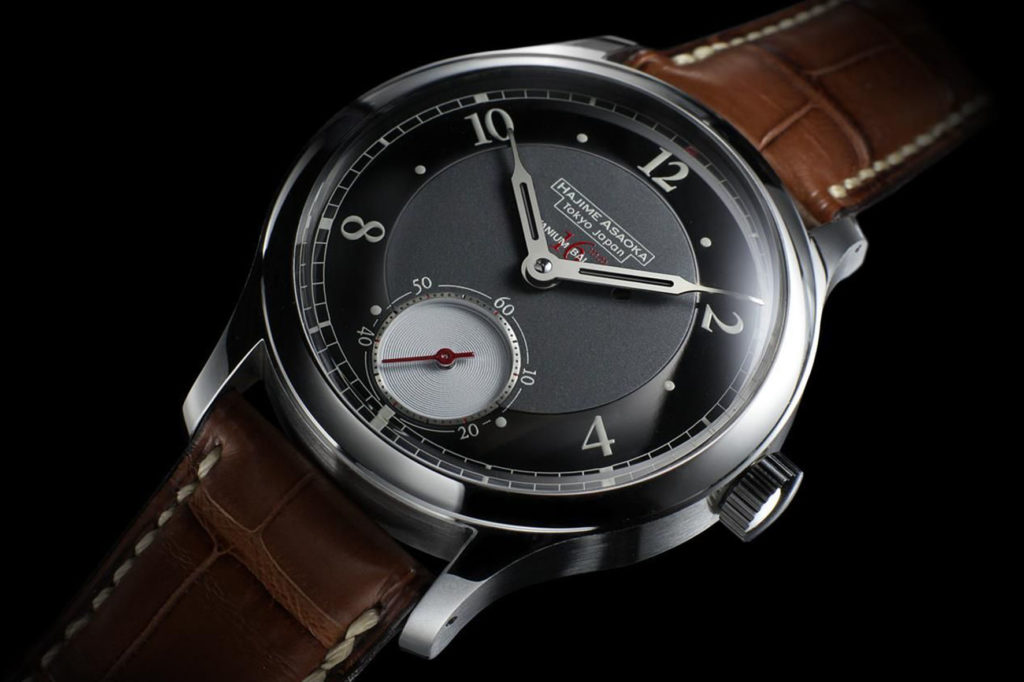
The hands are maybe the most complex part, because they are the result of a meticulous micro milling process and are completely hand-finished by Hajime Asaoka himself. Even the automatic caliber with 18,000 vibrations/hour and 40 hours of power reserve is entirely built, assembled and finished by hand by him.
PROJECT T TOURBILLON
The Project T Tourbillon was also born from the collaboration with Yuki Precision and with OSG, one of the best tool manufacturers in the world. The peculiarity of the watch is that it has 13 ball bearings, the use of which improves the impact resistance. The ball bearing for the tourbillon carriage is the smallest in the world.
In addition to being beautiful, with the contrast between the 43mm polished steel case and the deep black dial treated with DLC, the watch has two modules, one that supplies power to the main spring and one dedicated to adjustment. A solution that keeps each axis positioning more accurate, while also improving strength and accuracy.
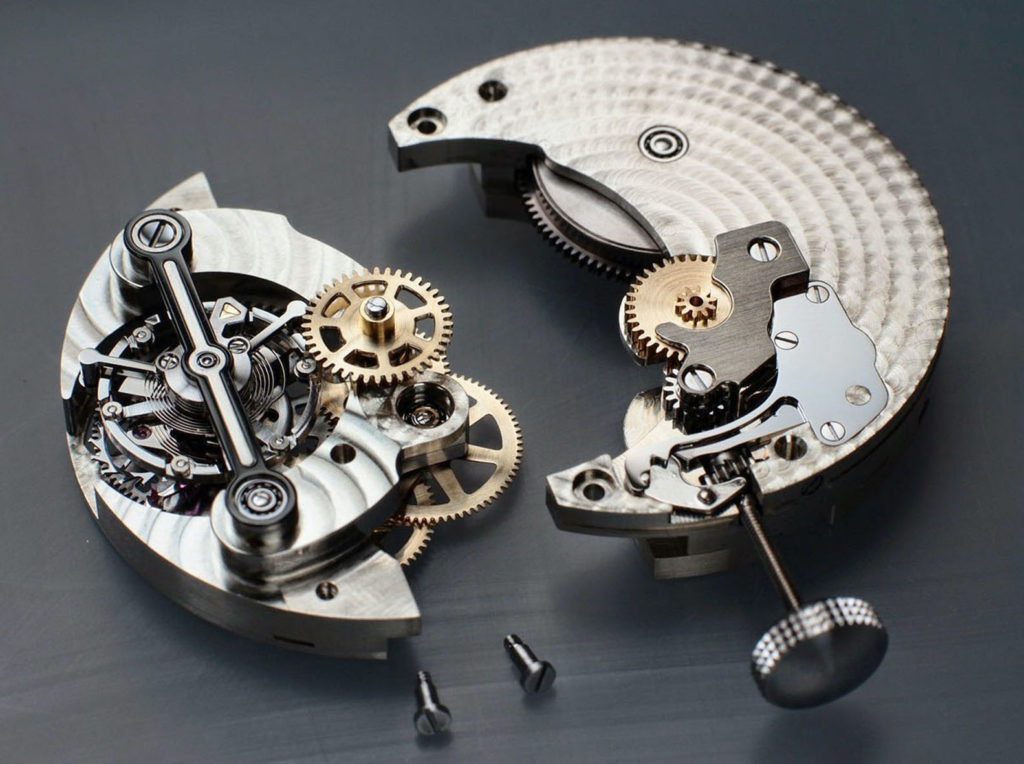
“I am very proud to create original movements, as in the case of the chronograph, because it is not common. The way Japanese collectors look at the watch is very standardized; in the case of Haute Horlogerie they mostly care about decorations and finishing, they are not very interested in looking at the watch as a whole. They enjoy it more physically than multisensorially. As a designer, on the other hand, I give a big importance to design and I think that sometimes enthusiasts do not completely understand this importance,» comments Hajime.
HAJIME ASAOKA RE-THINKS THE CHRONOGRAPH
In 2017, his attention to design led him to develop the chronograph, which quickly became sought after by enthusiasts all over the world. Hajime Asaoka himself loves chronographs and on his, he highlighted the caliber and operation through the skeletonized dial. All in a 38mm case, a measure that chronograph fans particularly love.
Focusing on the movement, it is a classic column wheel chronograph with horizontal clutch and clutch wheel; all components are clearly visible in action through the dial. Above all, the use of the shift wheel with eccentric cap makes it clear how Asaoka has learned by his masters, drawing inspiration from calibers such as Patek Philippe’s CH 29-535 PS.
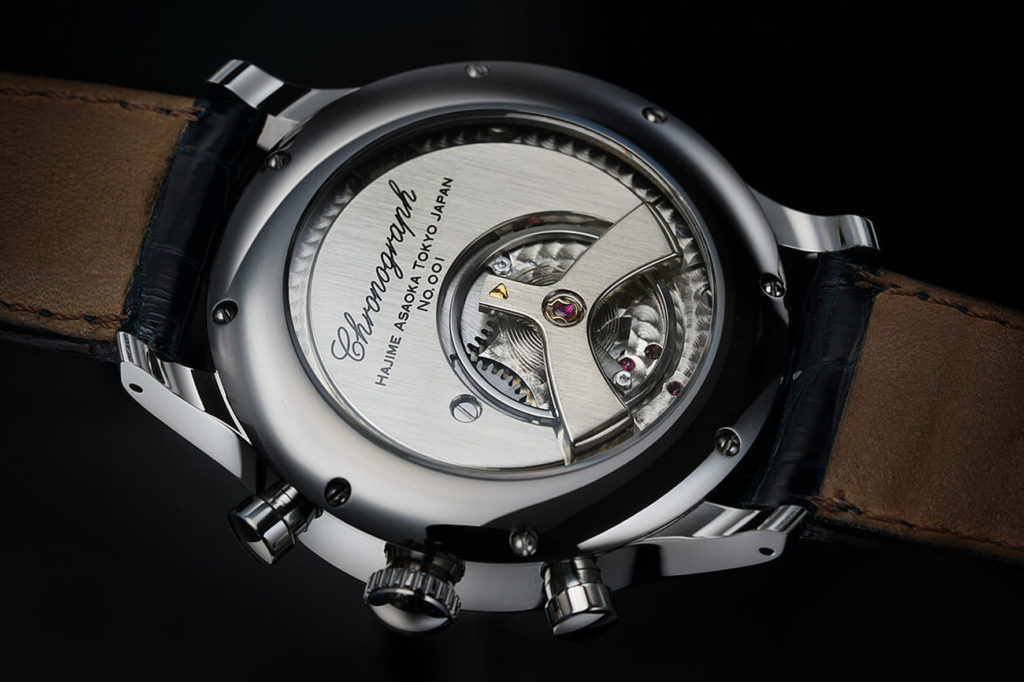
Finally, the designer’s touch is in the contrast between the hyper-refined dial and the caseback, with its almost naked simplicity. And that has increased interest in the watch: “I have a lot of requests for the chronograph and I have to focus on that one, but I have another one in mind, which will be unprecedented. I just don’t know when I will be able to dedicate myself to it…” Asaoka says, also in that interview.
KURONO BY HAJIME ASAOKA
Whether for this success or to satisfy more commercial needs, Hajime Asaoka has designed a column-wheel chronograph and a three-hand watch for Kurono Tokyo, both in limited series: 68 pieces for the Chronograph 1 and 288 for the Kurono Anniversary Green 森:Mori. Both were sold only on the Kurono website in a few minutes, thanks also to their low prices: $ 3680 for the chrono, $ 1790 for the Anniversary Green 森:Mori.
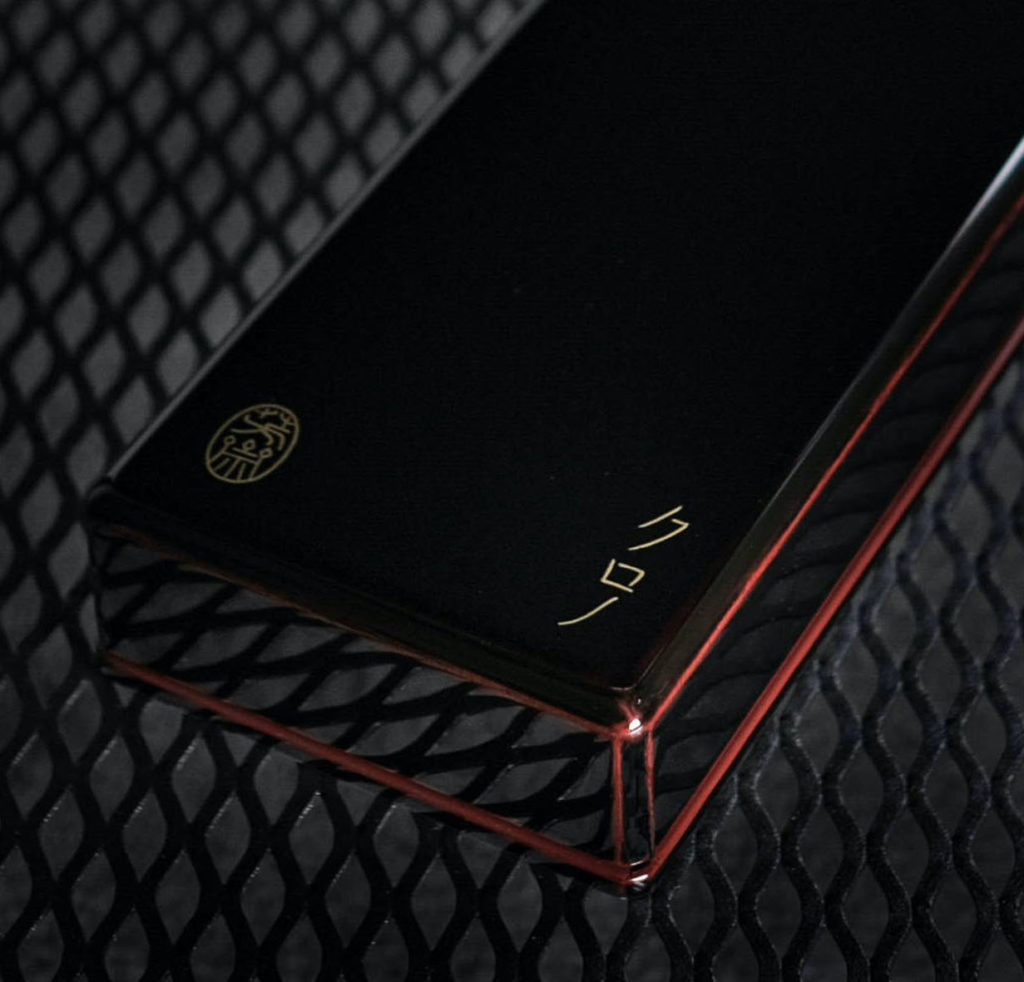
Asaoka’s touch is clear in the design of the dials. Speaking of the Chronograph 1, the polished steel studs that act as indexes are followed by alternating gray or black/silver rings that culminate in a tachymeter scale on the flange. A polished steel frame highlights the white date window with black numerals, while the counters at 3 and 9 are finished with a concentric guilloché pattern. The counter hand at 9 o’clock has the shape of a traditional “kyudo” arrow, a Japanese discipline of archery characterized by a strong philosophical imprint.
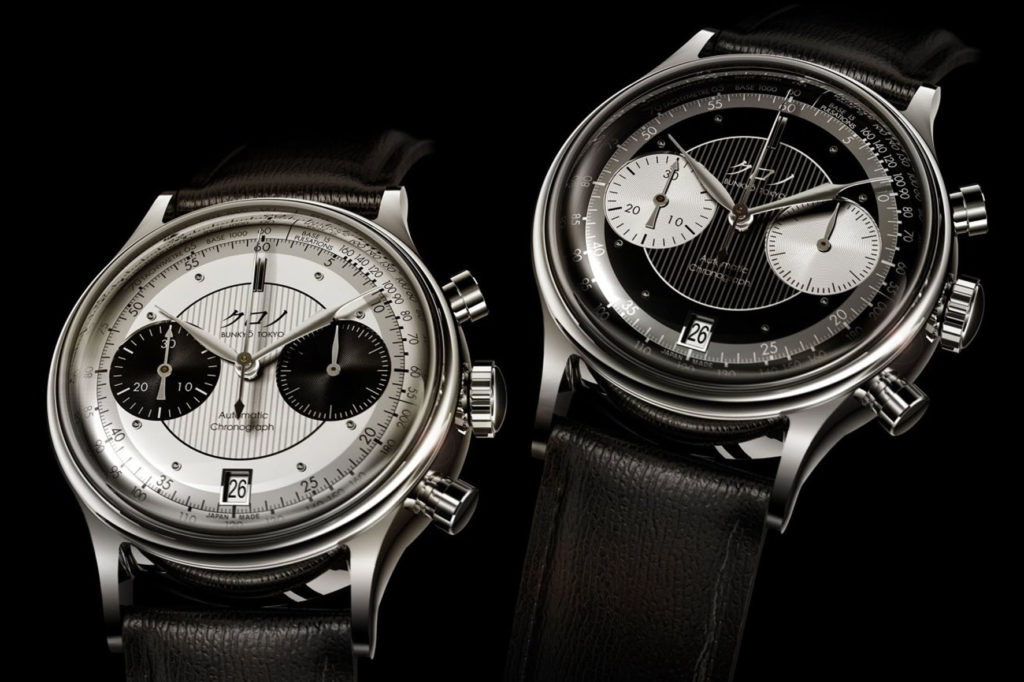
In Kurono Anniversary Green 森:Mori, on the other hand, the color chosen specifically by Asaoka stands out: a shimmering metallic green, with a subtle radial pattern. Depending on how the light hits it at different moments of the day or from different angles, the dial shows shades ranging from emerald, pine to forest green. Finally, the technical solution of the single-piece dial is enclosed by a sapphire crystal box glass that imitates the acrylic glass typical of the 1960s.
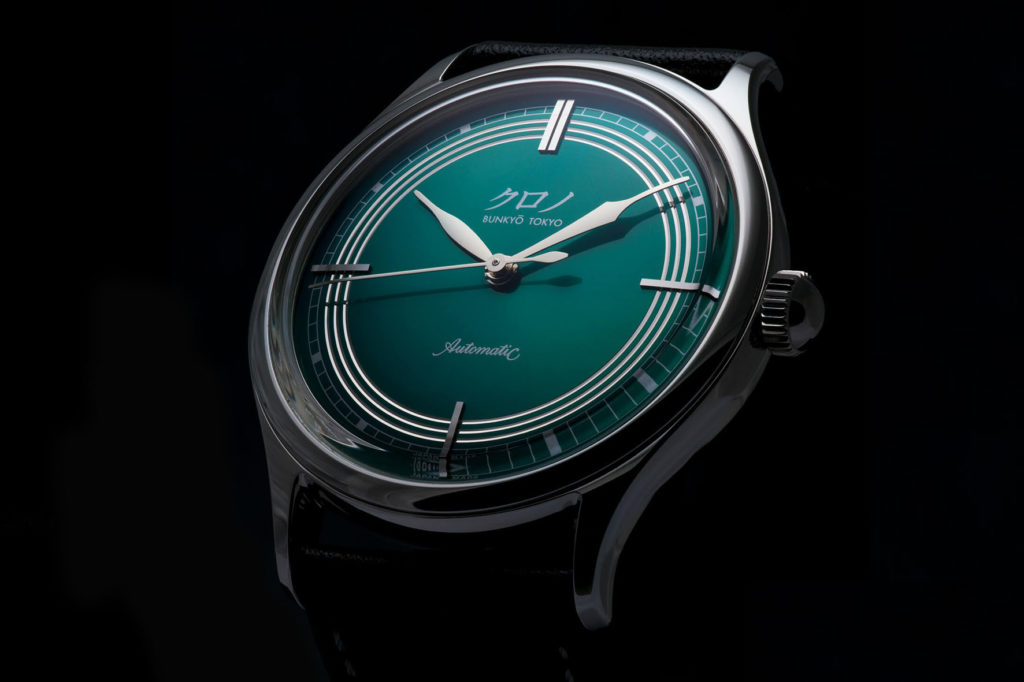
ARTISAN SOUL, INDUSTRIAL CALIBERS
The dials and casebacks, signed Bunkyō Tokyo, refer to the district of the city where Hajime’s design studio is located. The casebacks hide the calibers of the two watches from view, which are two Japanese industrial movements: Miyota 90S5 for the Anniversary Green 森:Mori, Seiko NE86A for the Chronograph 1. This is the main reason for the low cost of the two watches.
This market choice did not prevent the two watches from being selected for the 2020 Grand Prix d’Horlogerie de Genève: the first in the Challenge category, the second in the Chronograph category. Chapeau.
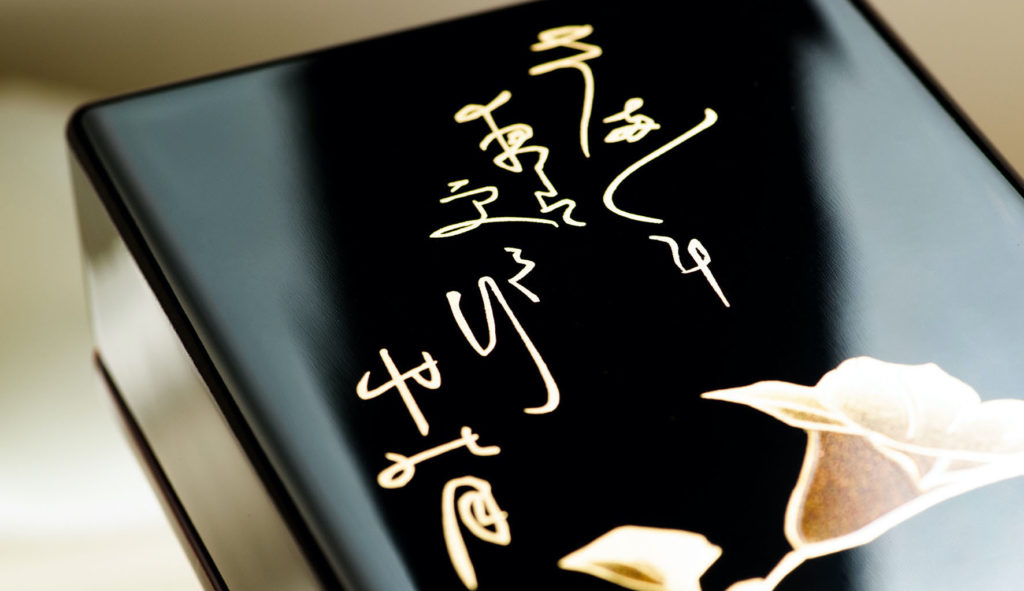
The collaboration with Kurono reinforces Hajime Asaoka’s status as one of the few non-Swiss brands that hold quality. The secret? The master tells it again, in words that are the perfect closure for this article: “Many of my ideas come to me as I walk, but many of these ideas are fragmented and an idea alone does not create a watch: when more ideas meet, they become a watch.”
By Davide Passoni

